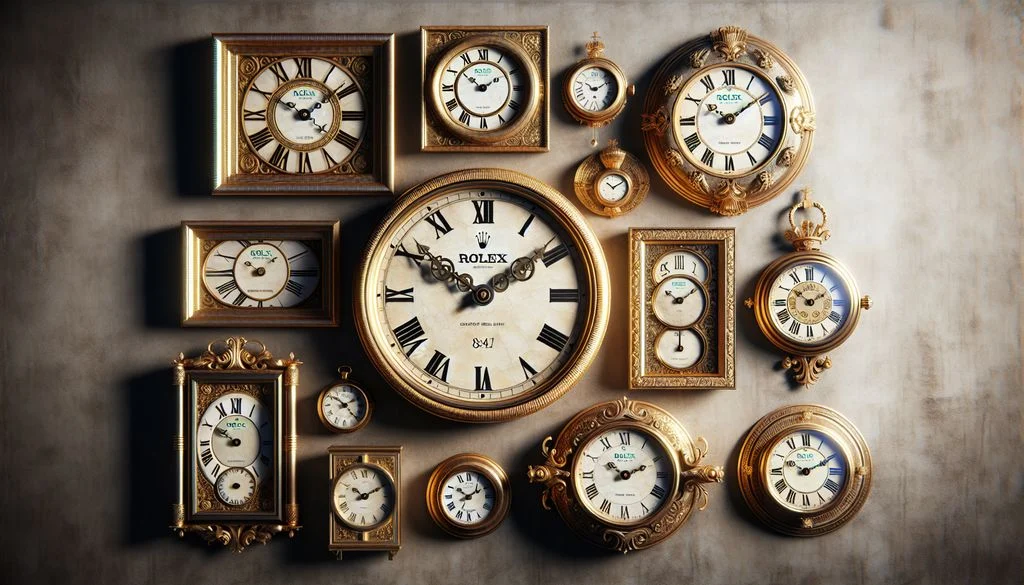Timekeeping is an essential aspect of human life, but the way cultures approach time and use clocks can vary significantly. From ancient methods to modern innovations, different societies have developed unique practices and philosophies surrounding time measurement. This article explores how various cultures approach timekeeping and clocks, highlighting the diverse practices and their impact on daily life.
1. Ancient and Traditional Timekeeping Methods
1.1 Sundials and Water Clocks
In ancient civilizations, sundials and water clocks were among the earliest timekeeping devices. These methods relied on natural phenomena to measure time.
- Sundials: Used by ancient Egyptians, Greeks, and Romans, sundials indicated the time of day based on the position of the sun’s shadow. The simplicity and reliance on sunlight made them accessible and practical for daytime use.
- Water Clocks: Known as clepsydras, water clocks were employed by civilizations such as the Chinese, Greeks, and Egyptians. These devices used the flow of water to measure time, providing a more consistent measure compared to sundials.
1.2 Hourglasses and Mechanical Clocks

The medieval period saw the advent of hourglasses and mechanical clocks, marking a shift towards more precise timekeeping.
- Hourglasses: Made of two glass bulbs connected by a narrow passage, hourglasses measured time by the flow of sand. They were commonly used in Europe and the Middle East and were particularly valued for their accuracy and portability.
- Mechanical Clocks: Developed in the late medieval period, mechanical clocks utilized gears and escapements to regulate time. These clocks were pivotal in standardizing time measurement and improving accuracy.
2. Timekeeping in Different Cultures
2.1 Western Approaches to Timekeeping
In Western cultures, the approach to timekeeping has evolved significantly, particularly with the advent of mechanical and digital clocks.
- Standard Time Zones: The introduction of standardized time zones in the 19th century, driven by the expansion of railways, transformed how time was regulated across different regions. This system helped synchronize schedules and improve coordination.
- Digital Clocks: Modern Western societies predominantly use digital clocks, which offer precise timekeeping and ease of use. The focus is on efficiency and exactitude, reflecting a culture that values punctuality and precision.
2.2 Eastern Approaches to Timekeeping
Eastern cultures have historically approached timekeeping with a blend of traditional and modern methods, incorporating both philosophical and practical elements.
- Chinese Timekeeping: Traditional Chinese timekeeping involved using water clocks and astronomical observations. The Chinese also adopted a 12-hour cycle, dividing the day into 12 “double hours” known as “shichen.”
- Japanese Timekeeping: In Japan, traditional timekeeping included the use of water clocks and later, mechanical clocks introduced by Western influence. Japanese culture places a strong emphasis on precision and punctuality, reflected in their modern use of advanced timekeeping technologies.
3. Cultural Philosophies of Time
3.1 Linear vs. Cyclical Time
Different cultures have distinct philosophies regarding the nature of time, which influence their approach to timekeeping.
- Linear Time: Many Western cultures view time linearly, emphasizing progress, deadlines, and efficiency. This perspective influences their use of precise and consistent timekeeping devices.
- Cyclical Time: In contrast, many Eastern cultures perceive time as cyclical, focusing on natural rhythms and recurring patterns. This cyclical view can affect how time is managed and valued, with an emphasis on harmony and balance.
3.2 Time as a Social Construct
In various cultures, time is viewed not just as a measurement but as a social construct that influences daily life and interactions.
- Punctuality and Social Norms: In cultures such as those in Germany and Japan, punctuality is highly valued, and timekeeping devices are used to ensure adherence to schedules and appointments. This reflects a cultural emphasis on respect and efficiency.
- Flexible Time Perception: In contrast, some cultures have a more flexible approach to time, where social interactions and relationships take precedence over strict adherence to schedules. This approach can be observed in parts of Latin America and the Middle East.
4. Modern Innovations in Timekeeping
4.1 Smart Clocks and Wearable Technology
The advent of smart clocks and wearable technology represents a significant innovation in timekeeping, reflecting a blend of practicality and modern lifestyle needs.
- Smart Clocks: These devices integrate with digital networks and offer features beyond traditional timekeeping, such as weather updates, alarms, and connectivity with other smart home devices.
- Wearable Technology: Smartwatches and fitness trackers provide real-time timekeeping along with health and activity monitoring. They cater to the modern need for convenience and multi-functionality.
4.2 Future Trends
Future trends in timekeeping are likely to focus on further integration with digital technologies, sustainability, and customization.
- Digital Integration: Advances in technology may lead to even more interconnected and intelligent timekeeping devices that seamlessly integrate with personal and professional life.
- Sustainability: There is an increasing focus on sustainable timekeeping solutions that reduce environmental impact and utilize eco-friendly materials.
Conclusion
Timekeeping practices vary widely across cultures, reflecting diverse historical developments, philosophical perspectives, and technological advancements. From ancient sundials to modern smart clocks, the way different cultures approach time reveals much about their values, priorities, and innovations. Understanding these diverse practices provides valuable insights into how time influences human behavior and societal organization across the globe.





Superb post however I was wanting to know if you could write
a litte more on this topic? I’d be very grateful if you could elaborate a
little bit further. Thanks!
Excellent pieces. Keep writing such kind of info on your site.
Im really impressed by it.
Hi there, You have performed a great job. I’ll certainly digg it and
individually suggest to my friends. I am sure they’ll be benefited from
this web site.
Been playing tt88nohu for a week now, and honestly, I’m hooked! It’s super engaging and keeps me coming back for more. Give tt88nohu a try—you might get addicted too!
Yo, bit789vip is looking pretty slick, to be honest. Been poking around, and I’m digging the VIP perks. Gets my recommendation! bit789vip
So können Sie entspannt ein paar Stunden im Kreise Ihrer
Freunde beim Pokerspiel im Casino Hamburg verbringen. Private Poker wird hier täglich, außer sonn-
und feiertags, von 18.00 bis 19.30 Uhr angeboten. Zwar
gibt es hier keine klassischen Tischspiele, Sie können aber dennoch jede Menge Spannung erleben. Zwischen Barmbek-Süd und Uhlenhorst befindet sich das Casino Mundsburg – ein reines Automatencasino
mit innovativem Flair. Bei rund 90 Geldspielautomaten sollten so schnell keine Langeweile aufkommen.
Täglich zwischen 17.00 Uhr und 04.00 Uhr wird gepokert,
gespielt werden die Cash-Games Omaha und Texas Hold’em.
Etwas Besonderes sind die Stargate-Spielautomaten, hier kann der Gast eine Rolle aus einer TV-Serie wählen und spielen. Der
Lucky Ladies Day beispielsweise ist ausschließlich für Damen reserviert,
die ein wenig spielen möchten. Unsere modernen Spielautomaten bieten Ihnen eine Vielfalt an Themen,
Bonusspielen und Gewinnchancen.
References:
https://online-spielhallen.de/bregenz-casino-bewertung-ein-umfassender-testbericht/
Also spiele auch du kalkuliert und mit smarten Twist-Einsätzen,
damit du dich mit etwas Glück umso mehr freuen kannst! Oftmals versprechen Online Slots mit Früchten einfaches Spielvergnügen, und viele dieser Slot Machines ermöglichen mit etwas Glück Freispiele oder auch einen Jackpot.
Bitte spiele verantwortungsvoll, da Glücksspiel süchtig machen kann und versichere dich, dass die
Online Casinos deiner Wahl sicher und lizenzierte Anbieter sind.
Doch auch für Liebhaber verschiedener Tisch- und Kartenspiele kommen auf ihre Kosten. Es
gibt eine große Auswahl der besten Novoline Spiele wie Book
of Ra, Sizzling Hot Deluxe und Dolphins Pearls bei Gametwist.
Grundsätzlich könnt ihr aber auch bei fast allen Casinos im Demo-Modus spielen und
habt so den gleichen Effekt – sogar komplett kostenfrei.
Vor allem blutige Anfänger und Freizeitspieler sind hier allerdings gut aufgehoben, um sich einen Überblick über die Slot-Welt zu verschaffen. Trotzdem stellt sich hier die Frage nach Betrug und Seriosität, da ihr ja trotzdem Geld zahlen müsst, um Twists
zu erwerben, mit denen ihr spielen könnt. Neben den Kartenspielen findet ihr bei GameTwist Brettspiele, die ihr in gewöhnlichen Online
Casinos nicht finden könnt. Diese Spiele sind nur ein Teil der 24
Kartenspiele, die ihr bei GameTwist findet und die ihr ohne Echtgeld spielen könnt.
Ihr könnt hier Mau Mau spielen oder euch eine Runde am Skat versuchen.
Gametwist wurde von der Funstage GmbH, einem Unternehmen der Novomatic-Gruppe, ins Leben gerufen.
Das Gametwist Casino ist schon lange kein Geheimtipp mehr.
Und im Freispiel-Feature gibt’s noch mehr charmante Bonus-Features in der Hit-Zone.
Auf die traditionelle weiße Toga wird hier verzichtet – stattdessen trägt der amerikanische Amor Latzhose und Baseballkappe.
Wie wäre es etwa mit dem kultigen Spielautomaten Book of Ra oder einer anderen Slot Machine aus unserer vielfältigen Spielothek?
Wenn du Book of Ra bereits perfekt beherrscht, hast du in unserem Casino die
Möglichkeit, zahlreiche andere Spiele zu testen!
References:
https://online-spielhallen.de/umfassender-leitfaden-zum-500-casino-login/
TeamViewer is secured by end-to-end 256-bit AES encryption, two-factor authentication, and other industry-grade
security features, such as conditional access, SSO, and much
more. With TeamViewer, ECU can provide remote support to 3,700 staff members and 31,000 students across four campuses.
With TeamViewer, establish a connection by entering the partner ID of the remote device, or connect through your saved contacts after setting up your account.
TeamViewer employs industry-leading security measures including end-to-end encryption, two-factor authentication, and detailed access logging to ensure safe connections.
Gain more visibility into your managed devices by monitoring critical aspects and
receiving alerts as soon as your attention is required.
Supercharge your help desk by providing proactive IT support instead of just reacting to service calls.
Know more about your devices — manage, monitor, and protect them.
With TeamViewer Remote, your devices, files, and applications are just a few clicks away,
so you can stay productive wherever you are. Tech defects, system errors,
and software queries result in costly downtime, but even if IT issues are unavoidable, slow response times are not.
Use AI-powered capabilities to help your IT
support teams work smarter and more efficiently.
Also open the TeamViewer client on the incoming device and follow the invite
to join the session. Get started with TeamViewer Remote—always free for personal use.
Finally, I love that it offers personal use.” Also I like that it is free for 1 user, which helps me to connect with other PC’s without paying anything.” “I like its simple and secure user interface. I can remote on and help diagnose the issues.”
References:
https://blackcoin.co/richard-casino-review/
The website is fully optimized for mobile browsers, ensuring smooth
navigation and fast loading times. Whether you’re using a desktop,
tablet, or smartphone, you’ll enjoy a seamless experience.
We also offer a range of customization options, allowing you to tailor the website to your preferences.
These options allow you to receive your winnings even faster,
so you can enjoy your success without delay.
We offer a range of deposit methods, including credit/debit cards, e-wallets, and bank transfers.
Some levels even offer customized promotions tailored to individual playing
styles.
In conclusion, NeoSpin login is a leading online gaming destination for Australian players seeking a premium experience.
The game library is fully optimised for mobile
play, meaning you can enjoy slots, table games,
and live dealer action wherever you go. You can access
your account, browse games, claim bonuses and manage transactions with ease.
Sports betting and account management (deposits, withdrawals, bonuses) function flawlessly on mobile.
Interactive chat features and multiple camera angles enhance immersion, making live games a
highlight for players seeking social engagement.
NeoSpin, launched in 2022 under Hollycorn N.V., is a dynamic online gaming platform crafted for
Australian players. By leveraging bonuses wisely and practicing responsible
gambling, players can maximize their enjoyment and potential winnings.
References:
https://blackcoin.co/ax99-casino-australian-real-money-gaming-hub/
Regulars at this virtual platform find themselves indulged, treated to an unending feast of incentives
that reward loyalty. Deposit enhancements and generous free
spins pave the path for exploration within King Johnnie.
Withdrawals are just as easy and processed within the same timeframes as the desktop platform, typically within hours.
You can deposit funds instantly using popular payment methods like credit cards, e-wallets, or
cryptocurrencies. Yes, the King Johnnie app allows you
to handle all your banking needs on the go. The app uses advanced SSL encryption technology to protect
your personal and financial data, just like the desktop version.
This speed allows players to access their winnings in real time,
making it easier to reinvest or use the funds as needed.
By fostering a responsible and supportive gaming
environment, King Johnnie Casino prioritizes the well-being
of its users above all else. This advanced encryption is industry-standard,
and it guarantees that your experience on the
platform is both secure and private. King Johnnie Casino employs
state-of-the-art encryption technology to protect players’ personal and financial
information.
References:
https://blackcoin.co/this-is-vegas-casino-review/
Sky crown casino developed this cashback system after seeing
how quickly bankrolls can disappear during unlucky sessions.
Use these funds immediately on any game across the platform.
The system handles everything behind the scenes – calculating losses
and crediting the bonus without any action required.
Players wake up to find 10% of net losses returned directly to their casino account.
After a rough streak at Sky crown casino, the sting hurts less knowing
some money comes back automatically. When you continue your journey after the
first deposit, even more rewards await you.
Poker evolved from various card games into the thrilling competition known worldwide today.
Perfect for mastering gameplay mechanics and discovering favorites bef Each provider brings unique themes and innovative
bonus features to the table. Featured recommendations highlight trending games currently
popular among Australian users. The gaming lobby showcases fresh releases alongside progressive jackpot titles
with potential massive payouts. Sky crown online accepts various payment methods,
including cards, e-wallets, and cryptocurrencies.
References:
https://blackcoin.co/plinkocasino-a-complete-overview/
online casino real money paypal
References:
mapnova.com.co
online casino australia paypal
References:
http://www.annunciogratis.net
casino con paypal
References:
corerecruitingroup.com
paypal casino online
References:
http://excelrenforcement.com/
Just checked out 777win66, and I gotta say, not bad! The selection of games is pretty decent and the site is easy to navigate. Definitely worth a look if you’re searching for a new place to try your luck! Check it out here: 777win66
888slot game có tính năng “theo dõi bạn bè” (opt-in) – xem ai đang online, chơi game gì, thắng bao nhiêu – tăng tính kết nối và cạnh tranh lành mạnh trong cộng đồng. TONY01-06S